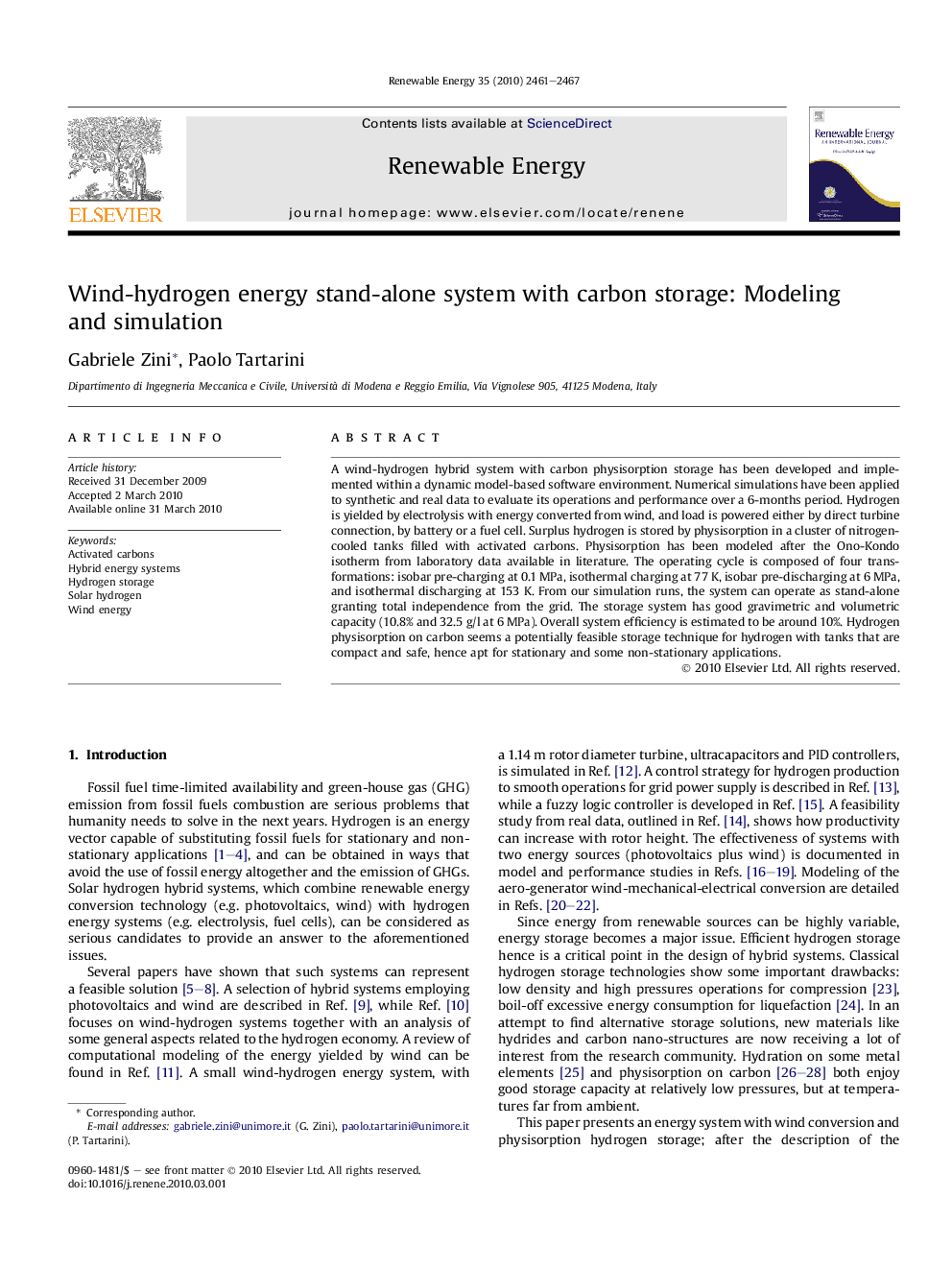| Article ID | Journal | Published Year | Pages | File Type |
|---|---|---|---|---|
| 301547 | Renewable Energy | 2010 | 7 Pages |
A wind-hydrogen hybrid system with carbon physisorption storage has been developed and implemented within a dynamic model-based software environment. Numerical simulations have been applied to synthetic and real data to evaluate its operations and performance over a 6-months period. Hydrogen is yielded by electrolysis with energy converted from wind, and load is powered either by direct turbine connection, by battery or a fuel cell. Surplus hydrogen is stored by physisorption in a cluster of nitrogen-cooled tanks filled with activated carbons. Physisorption has been modeled after the Ono-Kondo isotherm from laboratory data available in literature. The operating cycle is composed of four transformations: isobar pre-charging at 0.1 MPa, isothermal charging at 77 K, isobar pre-discharging at 6 MPa, and isothermal discharging at 153 K. From our simulation runs, the system can operate as stand-alone granting total independence from the grid. The storage system has good gravimetric and volumetric capacity (10.8% and 32.5 g/l at 6 MPa). Overall system efficiency is estimated to be around 10%. Hydrogen physisorption on carbon seems a potentially feasible storage technique for hydrogen with tanks that are compact and safe, hence apt for stationary and some non-stationary applications.
